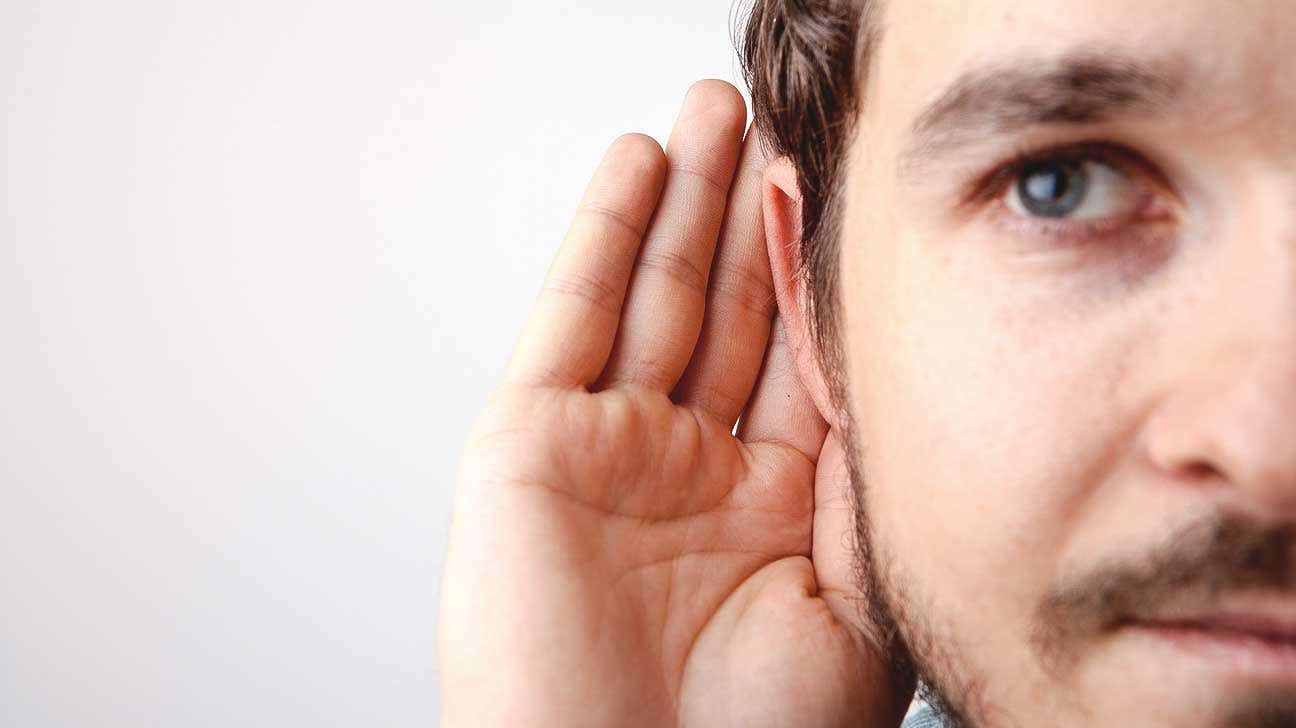New study shows brain training can improve hearing
Results offer great hope in developing clinically feasible auditory training programs that improve older listeners’ ability to communicate

[Apr. 12, 2023: Staff Writer, The Brighter Side of News]
Cognitive training can help restore effective auditory processing. (CREDIT: Creative Commons)
University of Maryland researchers in the Department of Hearing and Speech Sciences have found that people aged 18-30 and 65-85 with normal hearing—as well as participants from the older age group with hearing impairment—could all be trained to boost their ability to differentiate subtle changes in the speed, or “rate,” of sounds. Such changes can make it difficult to understand speech in challenging situations, such as in noisy or reverberant environments, or when listening to people who talk fast.
The study, which was published in the Journal of the Association for Research in Otolaryngology (JARO), is part of the $8.2 million Neuroplasticity and Auditory Aging program project grant awarded to Sandra Gordon-Salant, director of the UMD Hearing Research Lab and principal investigator for the projects. Each seeks to examine how the aging brain contributes to auditory and speech perception difficulties, and ultimately whether targeted auditory and cognitive training can help restore effective auditory processing—with distinctly different approaches.
The rate discrimination study is the first to show that “auditory training promotes neural changes in the brain, known as neuroplasticity,” Gordon-Salant said. “The results offer great hope in developing clinically feasible auditory training programs that can improve older listeners’ ability to communicate in difficult situations.”
The study involved a 40-person experimental group who compared multiple series of rapid tones (think beeps or clicks) in nine sessions over three weeks. Compared to members of the 37-person control group, who were asked to detect a single tone, those in the experimental group showed overall improvement. Most significantly, older normal-hearing people who underwent training could essentially restore their ability to discriminate fast changes in the timing of sounds to levels similar to those observed for young adults.
Related News
“We’ve seen some evidence that these temporal processing deficits might be improved in animal models, but this is the first time we’ve shown it in humans,” said Associate Professor Samira Anderson, the publication’s lead author. Her co-authors include Professors Matthew Goupell and Sandra Gordon-Salant.
The grant’s third project, which focuses on aging animals’ ability to hear sounds amid noise, is led by Shihab Shamma of the Department of Electrical and Computer Engineering and Institute for Systems Research.
Gordon-Salant and colleagues are actively recruiting individuals who have normal hearing or mild-to-moderate hearing loss to participate in the next phase of this rate discrimination study, as well as the other neuroplasticity grant-funded study on whether memory demands impact the effectiveness of humans’ training program.
The study’s findings offer potential hope to millions of people who suffer from hearing loss or difficulties in processing sound. As we age, our ability to hear and understand speech in challenging environments declines, making it difficult to enjoy social situations and engage in conversation. In addition, those with hearing loss may also experience depression, isolation, and a decline in cognitive function.
Hearing loss is a common condition that affects millions of people worldwide. In the United States, around 48 million people, or around 15% of the population, suffer from some form of hearing loss. By 2060, this figure is expected to double to around 95 million people, due to an aging population and an increase in noise-induced hearing loss.
According to the National Institute on Deafness and Other Communication Disorders (NIDCD), hearing loss can have a significant impact on a person’s quality of life. It can make it difficult to understand speech and communicate effectively, leading to feelings of frustration, anxiety, and isolation.
The good news is that many forms of hearing loss can be treated. Hearing aids, cochlear implants, and other assistive devices can help people with hearing loss to communicate more effectively and participate fully in everyday life. In addition, research like the rate discrimination study at the University of Maryland provides hope that targeted auditory and cognitive training can improve auditory processing and communication abilities for those with hearing loss.
The World Health Organization estimates that by 2050, over 900 million people will have some form of hearing loss. Despite the prevalence of hearing loss, it is often overlooked or ignored, leading to social isolation, depression, and reduced quality of life. However, with increased awareness and access to treatment options, people with hearing loss can lead fulfilling lives.
Hearing loss can be caused by a variety of factors, including genetics, noise exposure, infections, and aging. It can be temporary or permanent and can affect one or both ears. Symptoms of hearing loss include difficulty understanding speech, ringing in the ears, and feeling as though people are mumbling. If you or a loved one is experiencing any of these symptoms, it is important to see an audiologist for a hearing test.
Hearing aids, cochlear implants, and other assistive devices are the most common treatments for hearing loss. Hearing aids amplify sounds and can be customized to fit the individual's specific hearing needs. Cochlear implants are surgically implanted devices that bypass damaged parts of the ear and directly stimulate the auditory nerve. Other assistive devices, such as FM systems and captioning services, can also improve communication abilities.
In addition to these devices, auditory and cognitive training can improve the brain's ability to process sound. The rate discrimination study at the University of Maryland is just one example of this type of research. By training individuals to differentiate subtle changes in the speed of sounds, the brain's neural connections can be strengthened, leading to improved auditory processing abilities.
Listeners
Researchers recruited 301 listeners for a double-blind randomized controlled clinical trial and determined if they met the following age and audiometric criteria for these groups: young normal hearing (YNH, age 18–30 years), older normal hearing (ONH, age 65–85 years), and older hearing impaired (OHI, age 68–85 years).
Normal hearing was defined as pure-tone thresholds ≤ 25 dB HL (re: ANSI 2018) from 125 to 4000 Hz in the right ear. Impaired hearing was defined by a high-frequency pure-tone average (average thresholds at 1, 2, and 4 kHz) > 30 dB HL and thresholds at 2 and 4 kHz < 70 dB HL (to ensure signal audibility).
Hearing thresholds were required to be symmetrical (no interaural differences > 10 dB at any frequency) for all listeners, and there were no air-bone gaps > 10 dB at any frequency. Word recognition scores were > 70% for a single 25-word lists of the NU-6 test (Tillman and Carhart 1966) presented bilaterally at 75 dB HL in quiet.
Middle ear function was normal bilaterally based on average values for tympanometric peak pressure, peak admittance, tympanometric width, and equivalent volume. Acoustic reflexes were present from 500 to 2000 Hz, elicited ipsilaterally and contralaterally. Finally, auditory brainstem responses (ABRs) were recorded, and Wave V latencies were < 6.8 ms with no interaural asymmetries > 0.2 ms.
Average percent correct sentence recognition scores are displayed for pre- and post-training for clean (undistorted) speech, 40 % time-compressed speech (40 % TC), 60 % time-compressed speech (60 % TC), and 0.6-s and 1.2-s reverberation time (0.6s REV, 1.2s REV, respectively) in young normal-hearing (YNH), older normal-hearing (ONH), and older hearing-impaired (OHI) listeners in the experimental (EXP) and active control (AC) groups. (CREDIT: Journal of the Association for Research in Otolaryngology)
Additional criteria included the following: A passing score of ≥ 26 on the Montreal Cognitive Assessment (MoCA; Nasreddine et al. 2005), a negative history of neurological disease, a passing score on the Snellen vision screening chart ≤ 20/50 (Hetherington 1954), being a native English speaker, and earning a high school diploma.
All procedures were reviewed and approved by the Institutional Review Board (IRB) at the University of Maryland, College Park. Listeners provided informed consent and were monetarily compensated for their time.
Rate Discrimination Training May Partially Restore Temporal Processing Abilities from Age-Related Deficits. (CREDIT: Journal of the Association for Research in Otolaryngology)
The 125 listeners who met the study criteria were randomly assigned to one of two training groups: experimental and active control. Of these, 48 listeners did not complete the study. Seventeen listeners were dismissed due to: non-compliance with training (3), poor quality data (7), an adverse event (1), and excessive time delay associated with COVID-19 (6).
Twenty-six listeners withdrew from the study due to medical or transportation issues. Eleven listeners were lost to follow-up. The final numbers of listeners in each training group were 40 experimental (14 YNH, 16 ONH, and 10 OHI; 30 females) and 37 active control (15 YNH, 14 ONH, and 8 OHI; 28 females).
Note that 1% of listener data (31 of 2618 measurements) are missing because of isolated issues during data collection or because of anomalous data that did not converge.
Pre- and post-training phase-locking factor (PLF) for 100- and 300-Hz rates is displayed in the time–frequency domain for young normal-hearing (YNH), older normal-hearing (ONH), and older hearing-impaired (OHI) listeners in the experimental (top three panels) and active control (bottom three panels) groups. (CREDIT: Journal of the Association for Research in Otolaryngology)
Conclusions:
The Neuroplasticity and Auditory Aging program project grant awarded to Sandra Gordon-Salant and her team at the University of Maryland is funding three projects aimed at improving auditory processing and communication abilities in those with hearing loss. In addition to the rate discrimination study, the grant is also funding a study on whether memory demands impact the effectiveness of auditory and cognitive training programs and a study on aging animals' ability to hear sounds amid noise.
The rate discrimination study is the first to demonstrate that auditory training can promote neuroplasticity in the brain, leading to improved auditory processing abilities. The results of this study provide hope for the development of clinically feasible auditory training programs that can improve communication abilities in those with hearing loss.
Gordon-Salant and her team are currently recruiting individuals with normal hearing or mild-to-moderate hearing loss to participate in the next phase of the rate discrimination study and the memory demands study. These studies will provide further insight into the effectiveness of auditory and cognitive training programs and how they can be tailored to meet the individual's specific needs.
For more science and technology stories check out our New Discoveries section at The Brighter Side of News.
Note: Materials provided above by the The Brighter Side of News. Content may be edited for style and length.
Like these kind of feel good stories? Get the Brighter Side of News' newsletter.
Joseph Shavit
Head Science News Writer | Communicating Innovation & Discovery
Based in Los Angeles, Joseph Shavit is an accomplished science journalist, head science news writer and co-founder at The Brighter Side of News, where he translates cutting-edge discoveries into compelling stories for a broad audience. With a strong background spanning science, business, product management, media leadership, and entrepreneurship, Joseph brings a unique perspective to science communication. His expertise allows him to uncover the intersection of technological advancements and market potential, shedding light on how groundbreaking research evolves into transformative products and industries.



